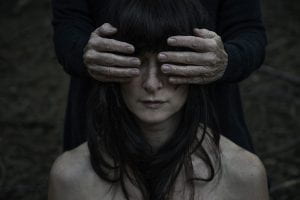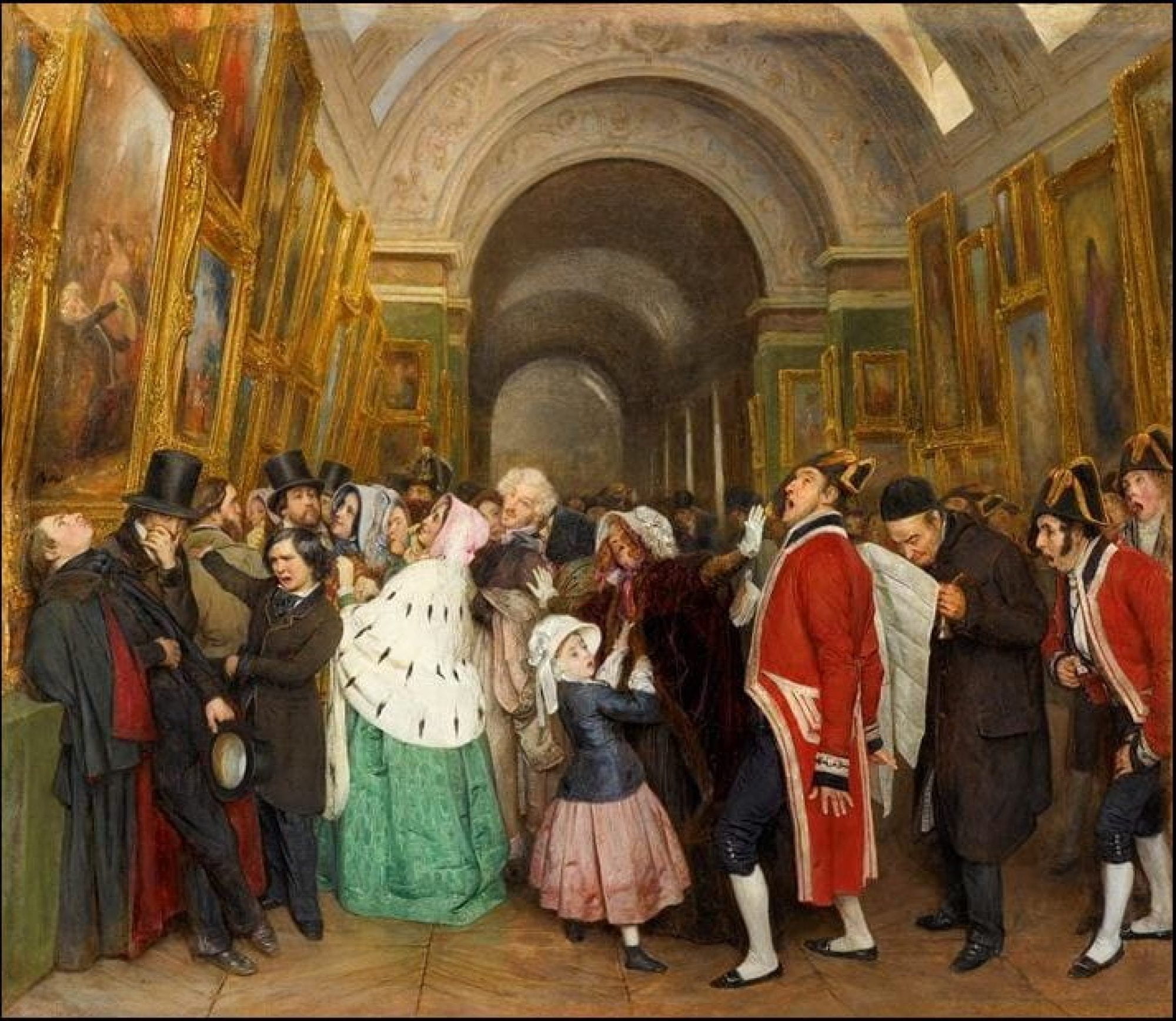The Wonderment of Looking into a Forest of the Future: Fake Plastic Forest featuring France Dubois, Annette Isham, Işık Kaya, and Leigh Merrill
By: Jasmine Plasencio
April 27, 2023
How will humans change the earth in 20 years? Will the trees continue to grow into power lines? Will humans still hide and dance in the woods? The Exhibition Fake Plastic Forests connects themes of life and moving into a new industrial age to the nature of the world we live in. I think that this exhibition is important to experience because not only is the artwork beautiful but also impactful. In this modern world the harm of pollution and industrialization grows day by day. People are losing their touch with the world they have been given. Consumed by capitalism, the pressure to create man-made creatures is impacting the way we see and interact with our environment. Fake Plastic Forest allows for viewers to see the importance of nature and the ways the industrial beasts are separating us from what we once had.
This exhibition is on temporary view at Sabinal, the Texas State Photography building, in San Marcos, from January 17, 2023 to April 3, 2023. Upon entry of the newly built building on Texas State campus the viewer enters a world of tomorrow, or perhaps the present. The photographs of France Dubois, Annette Isham, Işık Kaya, and Leigh Merrill line the walls of the small gallery. A selection of their photographic artworks, originally on view at The Contemporary at Blue Star in San Antonio, have been lent to this modest gallery. This allows students on campus to experience these important pieces of wonderment. The gallery is arranged in a ‘U’ shape, allowing viewers to walk around moving clockwise, and with a flow through the gallery. The artworks are left untitled and without proper credit to the artists. This is unfortunate and keeps us in question, but it also allows us to interpret our own ideas of the photographs without the interruption of a title. As the viewer looks around the exhibition, they will notice that all the artworks have one thing in common. Nature. The title of the exhibition, Fake Plastic Forest, introduces them. Although properly titled, the photographs are not blankly plastic forests, instead they are an interpretation of the interactions that contemporary humankind has with nature. Whether it is photographs of people in nature, or nature made out of fiction, these pieces together sparks a feeling of uneasiness towards our near future. We feel grief and possible fear for our future that is becoming overwhelming technological. These artworks pose questions of what we may be pushing ourselves into in the future. A world where nature’s creation and industrial creation are no longer separate but forcefully combined.
When we enter the gallery on the left we first see the gaze demanding works of Leigh Merrill. These works entrance the viewer by there more than real effects. Upon first glance the artworks appear to be regular photographs of trees in a forest. But the longer the viewer holds their gaze upon the works, the sooner they realize that there is something more to behold. The artworks look alive, and the viewer can feel the presence of the trees in the studio space. Merrill’s photograph Forest Set (Pines) presents four alive and growing trees in the foreground. From the left the first tree is seen from the base of its trunk a few feet up. The top of the tree is out of the picture. All the trees are shown covered in moss with accents of leaves surrounding them. The second from the left tree is the focal point being the largest tree with a wide base. The viewer can see where its roots are spreading out into the ground. There is a bright gray rock behind the bases of the first two trees. The third tree from the left is pushed further into the background. Covered in shadows it is the quietest of all the trees. The final tree on the far right is pushed almost completely out of the picture plane. This tree is the closest of all of them allowing the viewer to see the immense detail on its bark. There is a large gray rock placed between the three trees from the right on the forest floor. Peering into the forest the viewer notices something odd, extraordinary, and unfitting to the setting. An exit sign is hidden deep into the forest behind the largest tree second from the left. Only the last three letters on the sign are visible, making the viewer exude context clues from the font and shape. This peculiar object draws the viewer in more to find other possible hidden treasures in this forest scene. This remarkable photograph

Leigh Merrill, Forest Set (Pines), 39 x 49 inches, archival pigment print, 2021
interconnects the gracefulness and past of nature to the rapid push towards the future. Industrialization and climate change continue to rapidly change the environment we have been given. This change towards the future is commented on by Merrill’s incorporation of the exit sign in the background of the forest. This exit sign symbolizes an exit or pathway to leave the nature we have been given and turn into a path of the technological future.
Next we come to see photographs of people in nature, connecting themselves with the soil, trees, and moss. These are the artworks by France Dubois. Her photograph The Song of the Bear Depicts a woman kneeling on the bare earth. We see her from the shoulders up with her face as the main focus in the center of the photograph. Her shoulders are bare except for the length of her dark hair falling gracefully around her neck. There is a figure standing behind her dressed in a dark opaque long sleeve piece of clothing. There is a contrast of skin and full coverage making the kneeling nude woman appear more vulnerable. The clothed figure standing behind the main subject has her hands placed gently in front of the kneeling woman’s eyes. The woman kneeling in front carries a calm facial expression. Expressing a sense of trust to the woman behind her. The artworks delicately present the closeness two people can come to be. The tenderness of people connecting with the dim vastness of the deep forest. In her artist statement Dubois writes about her friendship with an elderly woman and the fear she felt about losing her

France Dubois, The Song of the Bear, 16 x 24 inches, Archival Pigment print, 2022
during the pandemic of 2020. Dubois states “This work is about hope, solidarity amongst friends and our connection to nature”. These images reflect the connection one can hold with the awesomeness of nature. Depicting the now and what we must hold onto before we are lost into the man made creations of the future.
Continuing through the exhibit clockwise the viewer next comes across the video artwork of Annette Isham. Isham is a Denver, Colorado based artist that works in expanded media creating 4D and animation while also teaching at Rocky Mountain College of Fine Art. Her video Dim Descension III is on view on the back wall. The video lasts 6 minutes and 5 seconds and explores a new way to look at the world. Isham’s process allows her to bend reality into a new dimension. Isham tells the viewers in her artist statement “My work explores the dynamics of gender, race, and geography through creating animated landscapes, layering moments of fantasy, failure, obstacles, and disruption.” She works by animating videography of landscapes and figures to create a new world. These new worlds speak on the way the world is rapidly changing. How people can interact with their changing environment. Creating the multi-dimensional forests, Isham creates a space for audiences to ponder on the way the earth looks today and how changing it slightly can lead to it being unrecognizable.
Finally the last group of artworks encapsulate something truly out of the future. The artwork of Işık Kaya lines the final wall of the gallery. These photographic creations combine elements of technology and nature into one. Playing on where we may end up in the future. Her series Second Nature is a photographic series of cell towers disguised as trees. One of her selections from her series shows multiple trees surrounding a cell tower in disguise. From the left there are 4 trees. First, a small palm tree followed by a larger thin tree with many leaves and branches. The next two are palm tree both taller than the first. In the center right of the picture is the cell tower. It is strikingly gray in the contrast of the very bright green leaves of the real trees surrounding it. Although it is off center it remains the focal point of the image. To the right of the cell tower is another palm tree. The real trees all appear to be dainty in comparison to the beast
Işık Kaya, Second Nature, 45 x 35, Archival pigment print, 2022
of the cell tower. The cell tower’s leaves hang aggressively against its pole. These images feel too far into the future. The mechanical heaviness leaves the viewer feeling uneasy and uncomfortable. The reality of this image is that they are not in the future, but in the now. These ‘trees’ are being accepted as the way life is. Disguising them as the beauty nature does not change their goal of rushing into the future. These cell towers in the words of Amy Clarke depicts a “societal preference for ‘fake’ aesthetics over ‘ugly’ reality.” The ugly reality is the destruction of nature for capitalist gain.
The future is rapidly pushing humankind into a world of technology. These artworks remind us of the beauty of nature and the respect we need to hold for it. Each of the artists in the show encapsulates some measure of the importance of nature. From the beauty of nature and the connections one may have in it in France Dubois works, to the subtle changing of the future beholds in Leigh Merrills work. Both show the deepness of nature and the beauty it contains. The dimensional bending of Annette Isham’s video project a reality we may ascend to. Making something recognizable yet twistingly different. Isham and Işık Kaya thrust the audience into a future that is already at our feet. This exhibition shows audiences the truth that they need. The truth of the necessity to connect to what nature is available before it is transformed into the unrecognizable. It is important to understand the way the earth looks now and the change that is creeping into our future. With the continuous advances of technology the beauty of nature as we know it may cease to exist.
Fake Plastic Forest at Texas State
